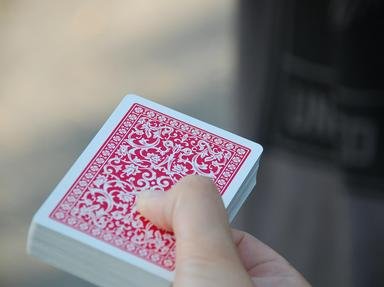Quiz Answer Key and Fun Facts
1. Modern playing cards printed in Europe and the United States fall into several national styles, as reflected in courts (face cards) and pips, or suits. What would we call the style that Bicycle brand playing cards have?
2. When the four suits we use in the US were first developed in the Fifteenth Century, clubs, with their clover-like shapes, represented which socio-economic group?
3. The Knight and Hero of France, La Hire, who had been a military commander in the Hundred Years' War, was a close friend of Joan of Arc. He was also credited with inventing the French card game "piquet", and, like Joan, was represented in ancestors of today's American cards as a face card. Which card represented La Hire?
4. Of the four kings labeled on the earliest French playing cards and who have become associated with the traditions of our modern decks, only one can be linked to the rule of France. Who was this iconic figure crowned "King of the Franks" in 768 and "Emperor of the Romans" by the Pope Leo III on Christmas Day, 800 AD?
5. Unlike the rest of the deck, the Joker did not originate in Europe, but in America as immigrants brought their card games across the pond. Originally referred to as "Best Bower," which German-born card game can we give credit to for this wild card?
6. The diamond suit originated in France under the term "carreau" (Karo in German) meaning tile. Which social class did this suit originally represent?
7. Which of the following was NOT one of the kings traditionally believed to be represented by playing card kings?
8. Spades, which still resemble spear points, originally represented which feudal class?
9. Like the hearts in the German playing card pack, the heart suit that developed in Fifteenth Century France represented which segment of the population?
10. Although Hera was the Queen of the Greek gods, she is not traditionally considered to be one of the queens in the deck of cards. That would be another goddess, represented by the Queen of Spades, who is also sometimes associated with Joan of Arc. Which warrior goddess would that be?
Source: Author
shvdotr
This quiz was reviewed by FunTrivia editor
WesleyCrusher before going online.
Any errors found in FunTrivia content are routinely corrected through our feedback system.
